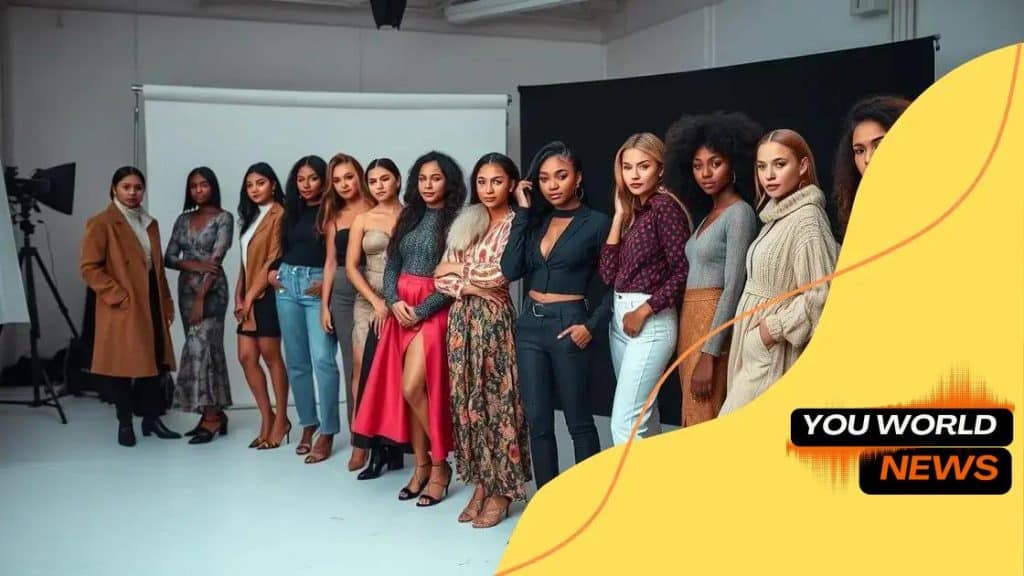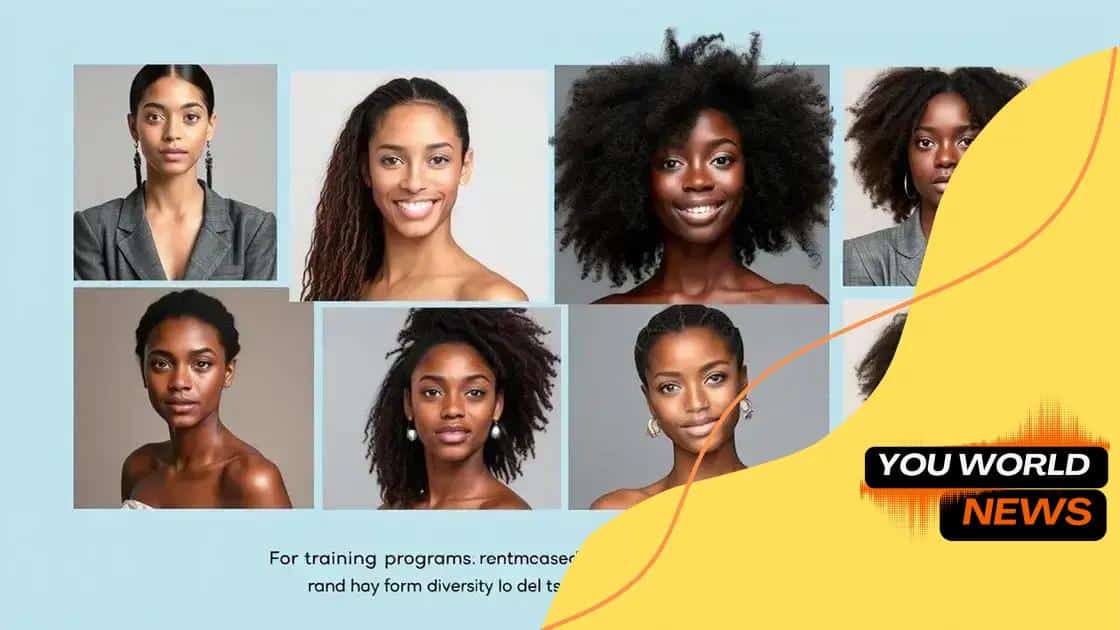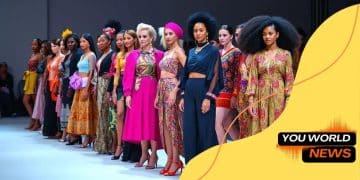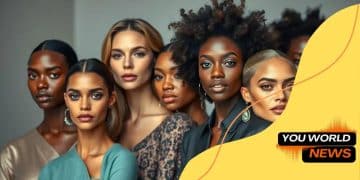Training programs for models embracing diversity

Diversity training programs for models foster inclusivity by incorporating technology, emphasizing mental health, and engaging with communities, empowering diverse talent in the fashion industry.
Training programs for models embracing diversity are becoming essential in today’s fashion landscape. But what does this really mean for the industry? Let’s dive in and explore the nuances together.
Understanding the importance of diversity in modeling
Understanding the importance of diversity in modeling is crucial for a more inclusive fashion industry. It’s not just about aesthetics; it’s about representation. When models come from different backgrounds, they bring unique perspectives that resonate with a wider audience.
Why Diversity Matters
Diversity in modeling helps challenge traditional beauty standards. It allows brands to connect with various demographics, promoting a sense of belonging. Here are some key reasons:
- Reflects society’s diversity
- Encourages self-esteem among different groups
- Helps brands appeal to broader markets
The conversation around diversity is evolving. Many brands are now actively seeking models that represent a vast array of ethnicities, body types, and ages. This movement not only reflects societal changes but also acknowledges consumer demands.
The Role of Representation
When individuals see themselves represented in media, it can have a profound effect. Representation in modeling can:
- Boost confidence in young people
- Encourage tolerance and acceptance
- Inspire future generations of models
Furthermore, consumers tend to seek out brands that embrace this diversity. As a result, companies that prioritize representation often outperform their competitors.
Moreover, understanding the importance of diversity extends beyond initial representation. It involves ongoing dialogue and commitment to ensuring that marginalized voices are part of the conversation in the fashion industry.
By recognizing and fostering this diversity, we can see a richer tapestry in the world of modeling. The future of fashion should not only reflect different backgrounds but celebrate each unique story and experience.
Key components of effective training programs
Effective training programs are essential for embracing diversity in modeling. These programs should equip models with the tools necessary to succeed in an inclusive environment. But what are the key components that make such programs effective?
Training Curriculum
A well-structured curriculum is foundational to any effective training program. It should cover a variety of topics that promote understanding and acceptance of diversity. Essential elements include:
- Understanding cultural differences
- Body positivity and self-acceptance
- Industry history regarding diversity
Incorporating these topics into a training curriculum ensures that models appreciate the varied backgrounds they represent. Continuous learning is vital as the fashion landscape evolves.
Expert Instructors
To facilitate learning, it is beneficial to have instructors who are experienced in diversity issues. These experts provide real-world insights that can enhance the training experience. They also serve as role models, inspiring trainees to embrace their unique identities.
Moreover, workshops that include diverse speakers or panels can further broaden perspectives. Engaging discussions can help models feel more connected to the material.
Real-World Applications
Lastly, putting theory into practice is crucial. Training programs should offer practical experiences where models can apply what they have learned. Activities may include:
- Role-playing diverse situations in modeling
- Collaboration with diverse teams on projects
- Participating in campaigns focused on inclusivity
Such experiences foster confidence and prepare models for real-life challenges. By emphasizing both education and application, training programs can effectively cultivate a sense of belonging among models.
Ultimately, implementing these key components can lead to stronger, more resilient models who are prepared to thrive in a diverse industry.
Case studies of successful diversity initiatives

Case studies of successful diversity initiatives in modeling can provide valuable insights and inspiration. These examples highlight how various brands and organizations have effectively embraced diversity, showcasing the positive impacts on both models and the industry as a whole.
Brand A’s Inclusive Campaign
One notable example is Brand A’s recent marketing campaign, which featured models from a wide range of backgrounds. This initiative aimed to challenge traditional beauty standards. Not only did it receive positive feedback from audiences, but it also saw a significant increase in social media engagement.
Agency B’s Model Representation
Agency B has made substantial strides in promoting diversity by actively recruiting models of different ethnicities, body types, and ages. Their commitment to inclusivity has led to collaborations with brands focused on diverse representation.
- Increased visibility for underrepresented groups
- A broader range of clients connecting with the agency
- Strengthened partnerships with brands valuing diversity
This approach shows the importance of having diverse models in representing a wider array of consumer preferences.
Foundation C’s Training Program
Foundation C developed a training program aimed at preparing aspiring models from diverse backgrounds. The training included workshops on confidence building, runway techniques, and cultural sensitivity. Participants reported feeling more equipped to navigate the industry.
Such programs emphasize the need for proper support in fostering an inclusive environment. When models feel empowered, they can better showcase their unique styles and stories.
The impact of these successful initiatives goes beyond immediate visibility. They encourage other brands and agencies to rethink their approach to diversity, ultimately benefiting the entire fashion industry.
Challenges faced in embracing diversity
Challenges faced in embracing diversity in modeling are often significant but essential to understand. These challenges can hinder progress and affect the overall effectiveness of diversity initiatives within the fashion industry.
Societal Biases
Societal biases play a substantial role in the perception of beauty. Many brands still adhere to traditional beauty standards, which can limit the representation of diverse models. This tendency affects public reception and can lead to pushback against brands that attempt to redefine beauty.
Limited Opportunities
Another challenge is the limited opportunities for models from diverse backgrounds. Often, these models find it harder to secure contracts compared to their peers. This disparity can be discouraging and reinforce systemic issues in the industry.
- Lack of visibility in major campaigns
- Fewer representation in fashion shows
- Limited access to networking opportunities
By recognizing these barriers, the industry can begin to address them, opening doors for underrepresented groups.
Workplace Culture
A workplace culture that does not value diversity can make it challenging for models to thrive. If models feel unsupported or undervalued, it affects their performance and confidence on the runway or in front of the camera. Building an inclusive culture is key in resolving these challenges.
Training for agents and decision-makers in the fashion industry can help create a more inclusive environment. By fostering understanding and empathy, organizations can better support diverse talent.
There is plenty of work ahead to overcome these challenges. Recognizing these obstacles is the first step toward creating a fashion industry that truly embraces diversity.
Future trends in diverse training practices
Future trends in diverse training practices for models are evolving rapidly as the fashion industry shifts towards inclusivity. Embracing diversity is not just a trend; it is becoming a core value in modeling. New approaches are emerging to ensure that all models feel represented and supported.
Incorporating Technology
One of the most exciting trends is the use of technology in training programs. Virtual reality (VR) and augmented reality (AR) are being used to provide immersive training experiences. These technologies can simulate real-world modeling scenarios, helping trainees build confidence and skills.
Focus on Mental Health
Another significant trend is the increasing emphasis on mental health. Many training programs are now incorporating workshops that address self-esteem, body positivity, and resilience. This focus helps models navigate the pressures of the fashion industry.
- Workshops on coping strategies
- Mindfulness training sessions
- Peer support groups
By addressing mental health, programs create a more supportive environment for models, which is essential for their overall well-being.
Community Engagement
Future training practices are also focusing on community engagement. Collaborating with local organizations can help models from diverse backgrounds gain resources and opportunities within the industry.
By building partnerships, organizations can facilitate mentorship programs, internships, and greater visibility for aspiring models. This empowers individuals and fosters a sense of belonging and community.
Moreover, ongoing training designed to adapt to cultural shifts and societal changes is vital. Programs must remain current, reflecting the values of an evolving industry. The goal is not just to train models but to cultivate a culture of inclusivity where every voice is heard and valued.
FAQ – Frequently Asked Questions about Diversity in Modeling Training Programs
What are the key components of effective diversity training programs?
Effective diversity training programs include a well-structured curriculum, expert instructors, practical applications, and a focus on mental health.
How can technology be used in modeling training?
Technology such as virtual reality (VR) and augmented reality (AR) provides immersive training experiences, helping models build confidence and skill.
Why is mental health important in modeling training programs?
Mental health workshops promote self-esteem and resilience, creating a supportive environment for models facing industry pressures.
What role does community engagement play in diversity training?
Community engagement provides models from diverse backgrounds with resources, mentorship, and networking opportunities, empowering them within the industry.





